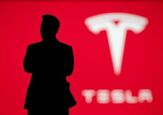#CobaltMining
Battery Prices Likely Heading for the Ceiling After Congo Raises Royalty Rate
The Democratic Republic of Congo has declared cobalt a “strategic” substance, nearly tripling the royalty rate miners will have to pay on it. According to a governmental decree, miners will now pay 10 percent in royalties to extract the element.
While we’ve previously warned of the likelihood of a global supply shortage elevating the price of batteries, it seems this will occur only after the Congo taxes the crap out of it. This is the second time cobalt has seen a royalty hike since June, when the region increased the previous 2 percent royalty to 3.5 percent.
Besides the looming prospect of a reversal in the falling price of EV batteries, a spike in the price of cobalt is already ruffling some feathers.
Battery Entrepreneur Claims Breakthrough, Reducing Need for Controversial Cobalt
While electric vehicles get better every year, they remain beholden to battery technology. This results in a few inherent shortcomings – the most noteworthy being limited range and extended downtime while charging. While this has helped throw a wet blanket EV adoption, it isn’t the technology’s only fault. Modern car batteries are also dependent on relatively rare metals that are both morally contentious and prohibitively expensive to procure.
Cobalt, mined almost exclusively in the Democratic Republic of Congo, and often by children, is likely the worst offender. Prices skyrocketed after EV manufacturing went mainstream, and analysts have long predicted a shortage that could severely impact the long-term popularity of zero-emission vehicles. Fortunately, a new way to build batteries may be on the horizon, though this particular application could create as many issues as it solves – since it involves removing an element that’s paramount to a battery’s long-term stability.
'Artisanal' Child Labor Business Booming, Thanks to Electric Vehicle Renaissance
Electric cars have been praised as the future savior of mankind for quite some time now, but only in the last few years have mainstream automakers promised to drive headlong into EV production. Governments around the globe encourage the transition. The reality of battery production isn’t so clear-cut, however. Unless you make your daily commute in a Mack truck, odds are good that swapping to a sparkly new four-door with a lithium-ion battery isn’t going to be better for the environment.
Currently, it takes substantially more energy to produce an electric car than a conventional internal-combustion model. EVs sourcing their energy from fossil fuel-burning power plants aren’t much better for the environment than something that runs off pump gas. In addition to that, defunct batteries have to be recycled or they become environmental hazards — and no one has quite figured out the best way to do that yet.
There’s also the issue of sourcing the materials for those batteries. EV cells need scarce precious metals like nickel and cobalt. Those materials take a lot of energy to harvest and have, unfortunately, led to an increase in child labor rates in Africa.


















Recent Comments